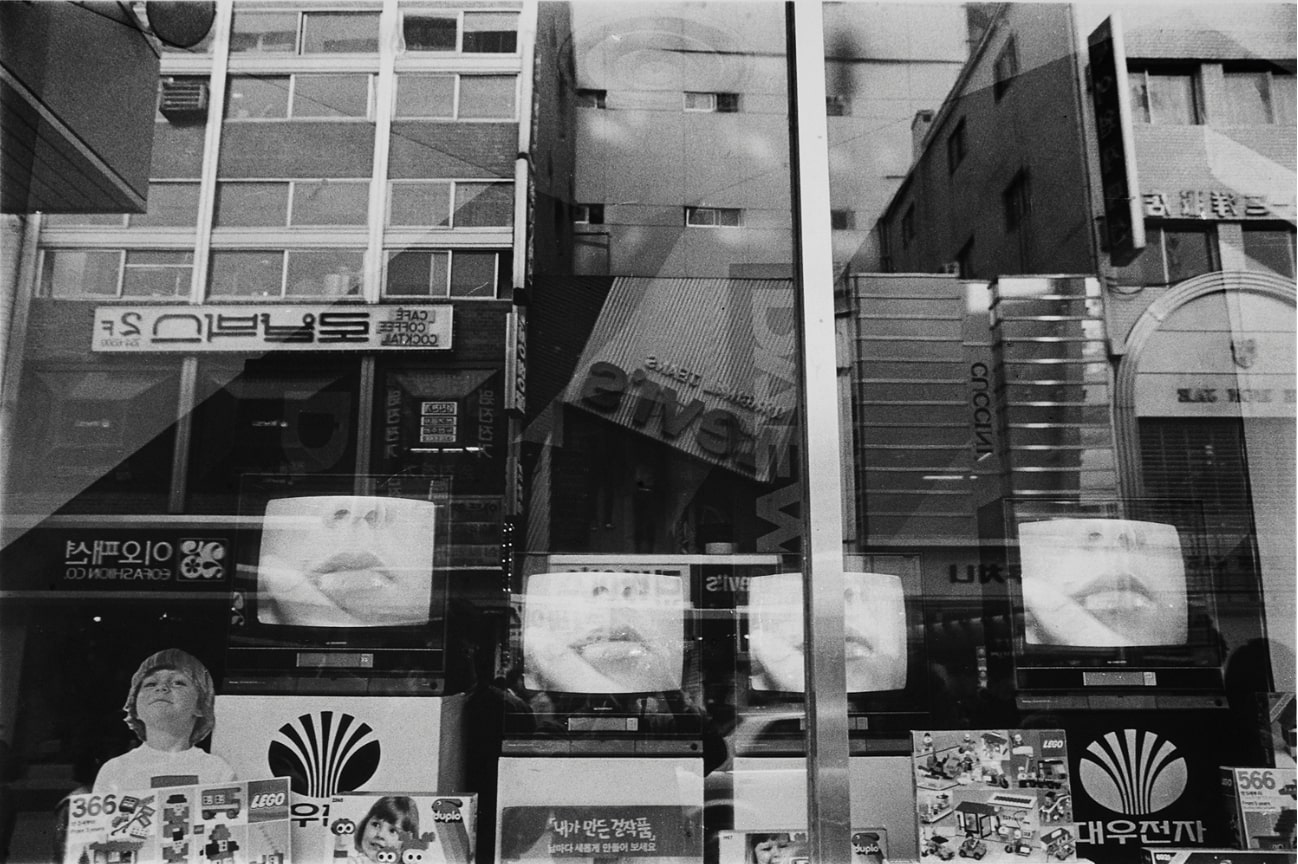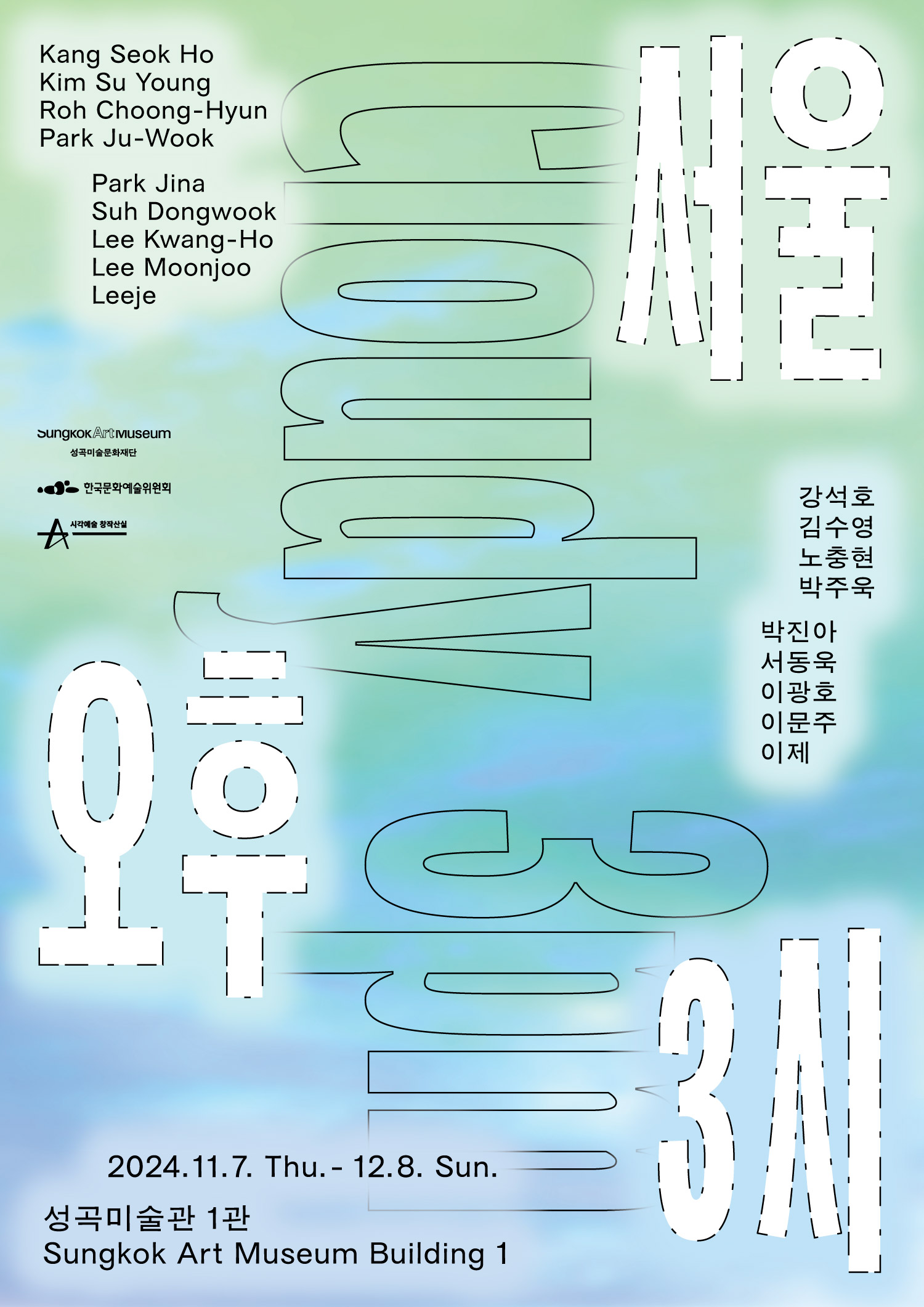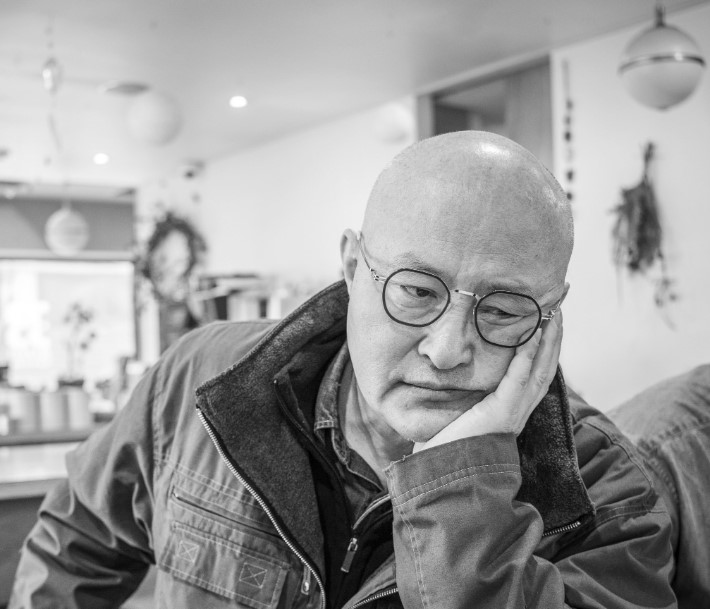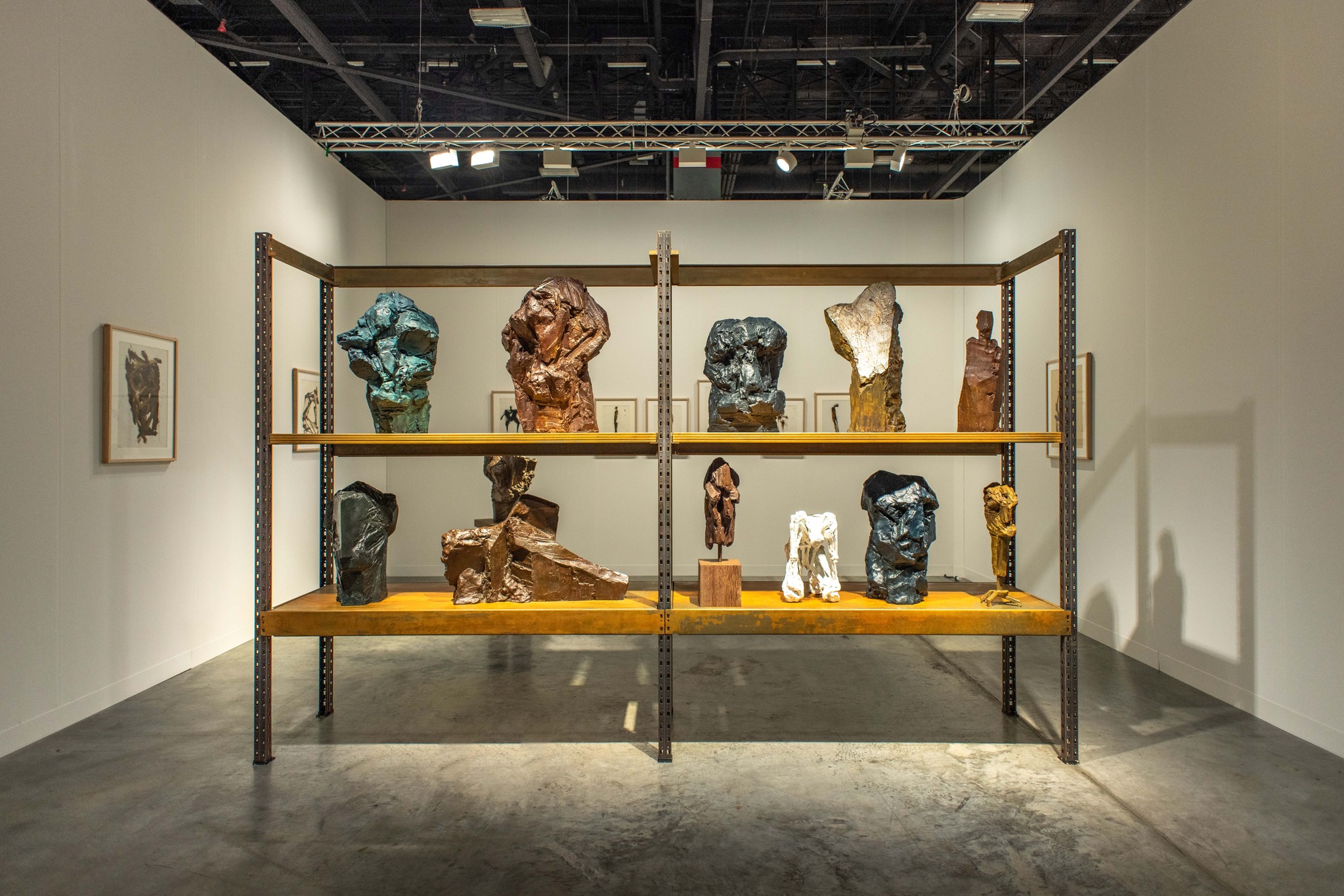Lee
Gapchul (b. 1959) began his career as a documentary photographer and recently
gained prominence in the contemporary art field for works that confuse the
boundary between the real and the unseen. Photography serves as a medium to
draw out the deeply embedded unconsciousness of the mind and to portray the
Korean peninsula—its landforms and countryside, its agrarian and folk
cultures—as the site of profound spiritual and emotional presences.
Lee's photography captures the people and nature of our land
using a straightforward technique, while simultaneously evoking a sense of
unfamiliarity and surrealism. His photos employ devices like quick snapshots,
tilted frames, and missed focus to bring out hidden memories and the
unconscious.
 Lee Gapchul, Images
of the City, 1986 ©Korean Artist Project
Lee Gapchul, Images
of the City, 1986 ©Korean Artist ProjectThe 1980s in Korea, when the artist was in his 20s, was a time
of rapid economic growth and dictatorship, marked by the chaos and change that
came with events like the 1988 Seoul Olympics and the illusion of entering the
ranks of developed countries. Externally, the world order was being reshaped
around the United States with the collapse of the Soviet Union, and in the art
world, the issue of "identity" emerged as a major aesthetic and
social concern.
Lee Gapchul felt an estrangement from what was once familiar
amidst the rapid changes in Seoul. From this point, he began documenting the
chaotic yet familiar 1980s.
The Korea of the 1980s, as seen through the artist's eyes, is
documented in series like Yankees on the Street, Images of the City,
and Land of Others. For example, Images of the City depicts the
appearance of Seoul and its people during a time when high-rise buildings
sprang up due to modernization and the city entered a mass consumer society,
while Yankees on the Street captures the lives of foreigners in Itaewon
in the form of documentary photography.
 Lee Gapchul, Images
of the City, 1986 ©Korean Artist Project
Lee Gapchul, Images
of the City, 1986 ©Korean Artist ProjectIn the Land of Others series, Lee began to document the
lives of the socially disadvantaged and the poor, and ordinary people living
under oppression as he traveled throughout Korea in the 1980s, a time when
economic aspirations coexisted with desperate political realities.
For most people, including the artist himself, who lived in an
era of violence under the military dictatorship of Chun Doo-hwan, where the
press was controlled and resistance movements were violently suppressed, Korea
felt more like a "land of others" than "our land" that
guaranteed freedom and happiness.
The artist expressed the various dissonances
in Korea at that time, where the excitement of international events like the
1988 Seoul Olympics mixed with despair and chaos, through fragmented
images—heads cut off by the frame, figures seen from behind, or faces dimly lit
by backlighting.
 Lee Gapchul, Land
of Others, 1988 ©Korean Artist Project
Lee Gapchul, Land
of Others, 1988 ©Korean Artist ProjectAs he traveled across the country, the artist suddenly realized
that capturing Korea also meant expressing the metaphysical traditions related
to life and death. This realization led the artist to focus on capturing not
dramatic moments by seizing movement, but rather entrusting himself to
intuition and the unconscious, capturing sacred beings in a still visual form.
From this point on, his photography began to transcend a social perspective and
ascend to a spiritual world, leading to the creation of the Conflict and Reaction (1990-2002) series, which marked a
significant milestone in Korean photography.
Through the Conflict and Reaction series, Lee
Gapchul captures the invisible within rituals that comfort the soul,
shamanistic rites for agriculture, and Buddhist ceremonies. He depicted these
through radical compositions with steep diagonal lines, shaky focus, and rough
grain—such as the face of a shaman wearing an ox head covered in blood to ward
off evil, people preparing for rituals, and the funeral of a monk who has
attained Nirvana.
These create a gap that allows viewers to discover
metaphysical energies, such as the sorrows, joys, and primordial spirits that
exist beyond the conscious world perceived by the eye.

Lee Gapchul, Energy - Yeongdeok, 2006 ©Korean Artist Project
Following the Conflict and Reaction series, which touched on the realm of the unconscious, the artist began to express "energy (氣)," a concept believed to permeate all things or wander the world from the perspectives of shamanism and Buddhism that have supported Korean spirit and culture. To capture "energy," which is invisible and unpredictable, the artist quickly approached landscapes, observed them slowly, and photographed them with a slow shutter. The resulting Energy (氣) series contains traces of time captured between the shutter clicks, which remain as afterimages like the form of a "soul."

Lee Gapchul, Silent Landscape-City of Symptoms, 2008 ©Lee Gapchul
Lee Gapchul has thus used photography as a medium to express
things that are not visible but exist as sensations. In the series Silent Landscape
and City of Symptoms, which he has been working on since 2008, he
focused on the feelings of "quiet and annihilation" and
"solitude and desolation" sensed within the grand landscapes of
nature and the city.
In these series, as in his previous works, Lee Gapchul’s
distinctive photographic style is evident, featuring compositions that extend
beyond the frame or subjects that are out of focus. What draws the viewer’s
gaze and emotions in these photos is not so much the subject or landscape, but
the dark spaces within the photo. The artist refers to these spaces as "residual
darkness," which is filled with invisible signs, as if something is about
to happen.
In other words, Lee Gapchul does not simply photograph something; he
leaves a space in the photograph for the unseen. The "residual darkness"
in his photographs transcends the conscious realm perceived by the eye and
penetrates into our psychological and spiritual world, the realm of the
unconscious.
In this way, Lee Gapchul has established his identity as a
subjective documentary photographer who, while seeming to continue the
traditional form of black-and-white documentary photography, uses his unique
photographic language to tell stories about the "unseen." He says
that before taking a photo, he does not wait for the subject to come into focus
but waits for the moment when his mind is emptied.
For him, photography is a
reflection of his own sentiments toward the world and an exploration of the
spiritual roots of Koreans, his own roots. Lee Gapchul's photography exists not
as a "record" but as a field where he "tells" the story of
Korean identity within the realm of the individual.
"I didn’t want to 'record' even when I was photographing the same Korean documentary. No matter how long I walked with other photographers, I didn’t see what they saw. I didn’t even look at it. (...) When the frame is normal, I don’t feel like taking a picture. Only when the frame is cut off, tilted, or scattered does my memory pass by. Only that moment reveals my true self."

Artist Lee Gapchul ©Leica
Lee Gapchul was born in Hapcheon, Gyeongnam, and grew up in Jinju. He graduated from the Department of Photography at Shingu College. He has held solo exhibitions such as “Yankees on the Streets” (Hanmadang Gallery, Seoul, 1984), “Images of the City” (Hanmadang Gallery, Seoul, 1986), “Land of Others” (Kyung-In Museum of Fine Art, Seoul, 1988), “Conflict and Reaction” (Kumho Museum of Art, Seoul, 2002), and “Energy (氣)” (Museum Hanmi, Seoul, 2007, 2008). He has also participated in numerous group exhibitions both domestically and internationally. His published works include Conflict and Reaction, In Autumn, and Lee Gap-chul. He has received several awards, including the Sagamihara Asian Photographer Award and the Lee Myung-dong Photo Award. Currently, he is represented by Galerie VU' in France.
References
- 제13회 광주비엔날레, 이갑철, 충돌과 반동 - 소머리를 머리에 인 무당, 태안 (The 13th Gwangju Biennale, Gap-chul Lee, Shaman wearing a cow's head on her head, Taean) :
- 열화당, 이갑철 (Youlhwadang, Lee Gap Chul) :
- 열화당, 타인의 땅 (Youlhwadang, Land of Others) :
- 박이현, “적막한 충돌과 반동_이갑철”, 월간사진, 2019 :
- 뮤지엄한미, 이갑철 《적막강산-도시징후》 (Museum Hanmi, Lee Gapchul “Silent Landscape-City of Symptoms”) :





















